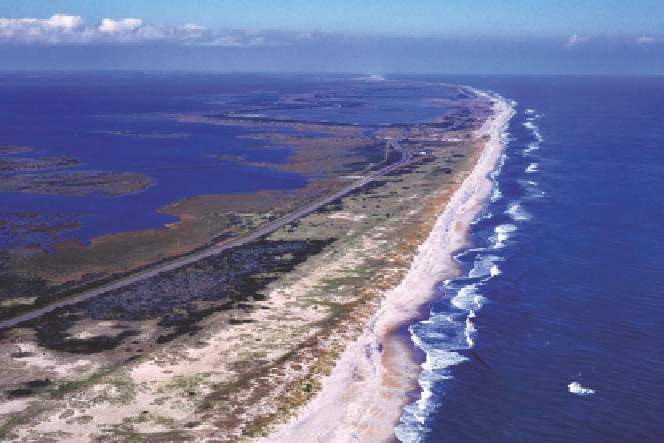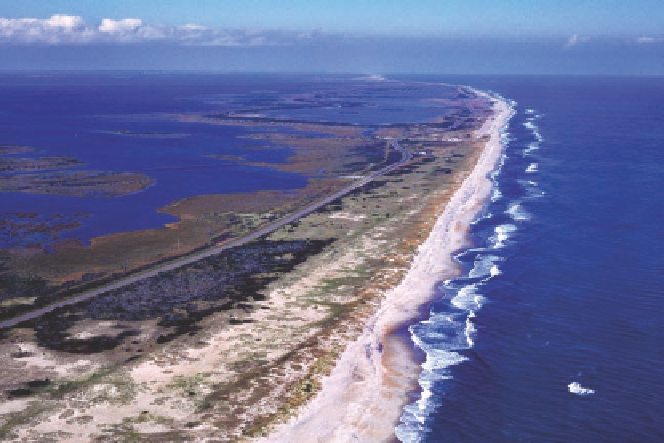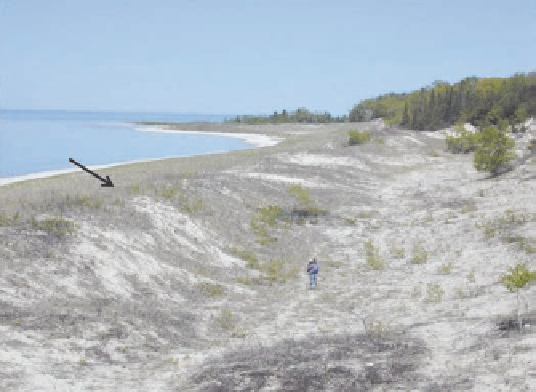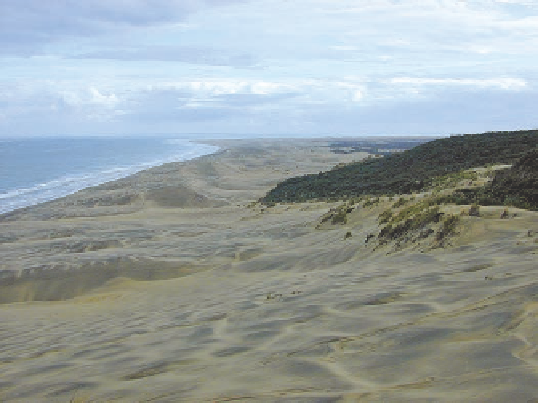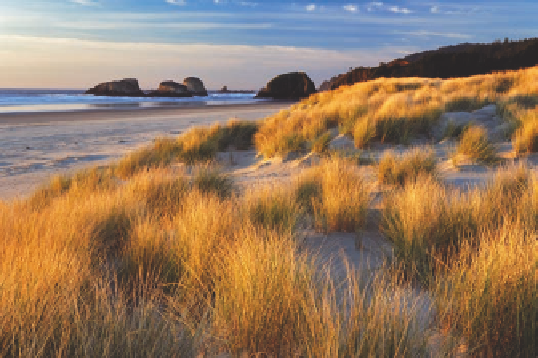Geoscience Reference
In-Depth Information
so named because they transgress (advance) inland and bury
older surfaces (Figure 19.25b).
Coastal dunes are found all over the world. Spectacu-
lar dune fields occur along the coast of Namibia in Africa,
Australia, Brazil, India, many shores in Europe, Mexico,
and numerous other places. Coastal dune fields also line
much of the U.S. shore. Perhaps the best example of such
dunes in a marine environment along a U.S. coast is seen in
the fantastic dune fields in Oregon and Washington (Figure
19.25c). These dune fields have formed in areas where the
high sand supply was remobilized by strong westerly winds
off the Pacific Ocean.
Barrier Islands
Another type of depositional landform that
occurs along coastlines is a
barrier island
,
which is an accumu-
lation of sediment (sand, gravel, boulders, and/or shells) paral-
lel to the shore in the ocean that is formed by waves, tides, and
winds (Figure 19.26). These islands tend to form on broad, gen-
tly sloping continental shelves. Although no firm agreement ex-
ists about how these islands develop, a leading hypothesis is that
they are linked to rising sea levels following the most recent ice
age. In this model, sediment deposited on the continental shelf
by rivers during the Wisconsin glacial period was reworked and
molded when sea level began to rise as the ice sheets melted.
As the water level slowly rose, the shelf sediments were shaped
(a)
(b)
Thomas R. Fletcher/Alamy
(c)
Figure 19.26 A typical barrier island
Barrier islands are essen-
tially long sand bars, with some capping sand dunes, that form
parallel to the coast. These landforms may have formed when ris-
ing sea levels at the end of the Wisconsin glacial period reworked
sediments on the continental shelf into these linear features. Note
the dunes on this island due to high sand supply.
Figure 19.25 Coastal sand dunes.
(a) Foredune (arrow) along
the east coast of Lake Michigan. The dune formed because sand
blew up from the beach, which can be seen to the left. Note the
person for scale standing in a swale in the lee of the dune and
the way the dune axis mirrors the beach. (b) Transgressive dune
field on North Head, New Zealand. Here, eolian sand has spread
inland due to very high sand supply and strong winds blowing
off the Tasman Sea (left). (c) Coastal dunes on the Oregon coast.
Westerly winds here have produced this beautiful dune field. Do
you see the sea stacks in the background?
Barrier island
An elongated bar of sand that forms parallel to
the shore for some distance.
